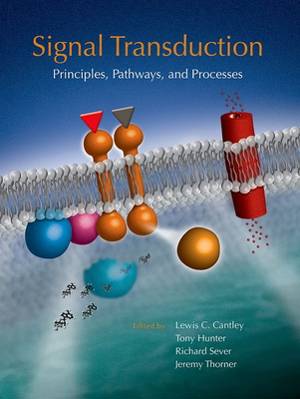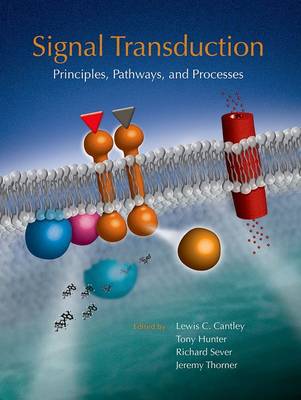
- Retrait gratuit dans votre magasin Club
- 7.000.000 titres dans notre catalogue
- Payer en toute sécurité
- Toujours un magasin près de chez vous
- Retrait gratuit dans votre magasin Club
- 7.000.0000 titres dans notre catalogue
- Payer en toute sécurité
- Toujours un magasin près de chez vous
Signal Transduction: Principles, Pathways, and Processes
Lewis Cantley, Tony Hunter, Richard Sever, Jeremy Thorner
Livre broché | Anglais
136,95 €
+ 273 points
Description
Cells must respond to a wide variety of signals. These include hormones, growth factors, morphogens, and environmental stress, as well as signals from internal regulators and checkpoints. A complex network of signal transduction pathways within the cell ensures that these signals are relayed to the correct molecular targets and that the cell responds appropriately. This textbook provides a comprehensive view of signal transduction, covering both the fundamental mechanisms involved and their roles in key biological processes. Taking a novel approach, it first lays out the basic principles of signal transduction, explaining how different receptors receive information and transmit it via signaling proteins, ions, and second messengers. It then surveys the major signaling pathways that operate in cells, before examining in detail how these function in processes such as cell growth and division, cell movement, metabolism, development, reproduction, the nervous system, and immune function. The book is essential reading for students learning about signal transduction for the first time. It will also be a vital reference for all cell, molecular, and developmental biologists and pharmacologists, neurobiologists, and immunologists studying processes regulated by cell signaling.
Spécifications
Parties prenantes
- Auteur(s) :
- Editeur:
Contenu
- Nombre de pages :
- 452
- Langue:
- Anglais
Caractéristiques
- EAN:
- 9781621821816
- Date de parution :
- 31-10-13
- Format:
- Livre broché
- Format numérique:
- Trade paperback (VS)
- Dimensions :
- 216 mm x 274 mm
- Poids :
- 1279 g

Les avis
Nous publions uniquement les avis qui respectent les conditions requises. Consultez nos conditions pour les avis.






